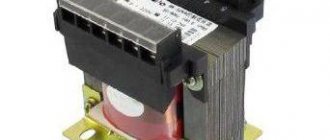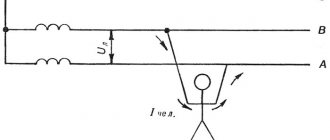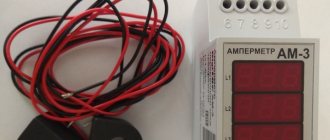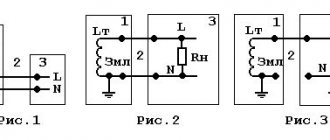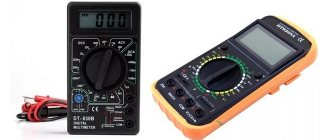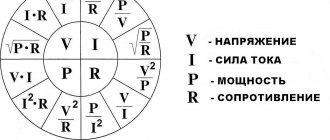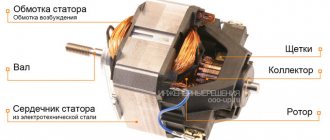Electrical connectors are contact elements that can be easily separated or connected to each other without special actions. They can be single-phase or three-phase types. The limit for using the latter is 380 volts, while single-phase ones can be used at a voltage of no more than 250 volts. The plug socket is the most popular example of this device.
What you need to know
A high-quality plug connector must have a housing made of durable plastic that is not subject to combustion, with insulating and shockproof characteristics. Initially, a structure must be formed that protects against accidental ingress of dust, oils, water and has anti-corrosion properties, which can be used over a wide temperature range and with high humidity.
The plug connector usually has a flexible circular clip to hold the live cable wire. Reliable tinned copper is used for the production of terminals, which ensures optimal connection and electrical characteristics. The location of the elements contained inside complies with the established standard. Misconnection is eliminated by using different colors for different voltages.
Special electrical connectors, initially called “mother” and “father,” have become widespread in temporary wiring. It is worth noting that their use is not limited to one temporary type. They are indispensable in everyday life when connecting high-power household appliances, as well as in production for industrial mechanisms.
Device differences
The power outlet is primarily divided according to its operating voltage rating. Today, three-pin connectors (grounding, phase and neutral), four-pin (3 contacts and zero) and five-pin (grounding additional contact, 3 phase, 1 neutral) for three-phase networks are manufactured for single-phase networks. According to their design, they can be stationary or portable. In addition, electrical connectors have different degrees of protection.
There are options designed for installation above baseboards, the safety of which is ensured by a rotating washer. Thus, the plug can be connected only after it has been turned to the specified angle. The functionality of the branch box is carried out by the lower part of the device. Specialized plug sockets for electrical baseboards are used; they have flat contacts and allow you to connect two plugs at the same time.
It is worth noting that some plug connectors have a design that differs from the Russian plug connector. Operation requires the purchase of adapter devices if they were not supplied.
Connection details
Connecting the elements is similar to the standard connection of household plugs and sockets, so it will not cause difficulties even for an inexperienced technician. Power is transferred to the cable connectors and removed from the plug when moving to an electrical load. The wiring is connected to the contacts using clamps on screw-type terminals.
Electrical cables with flexible wiring are mainly suitable for power connectors. They consist of a stranded conductor and are the best option for temporary use, as well as a power cable located on a vibrating or moving mechanism. To create high-quality contact in the connector terminals with stranded wires, they require maintenance. It is possible to use tips instead of tinning.
Electrical connectors have a technically important characteristic (of course, subject to good performance), which is the rated current passing through them without heating the contacts. The magnitude of the current depends on the cross-section of the current-carrying element and the overall surface of the contacts.
Installation and connection of sockets with spring terminals using the example of ABB Basic 55
The Basik 55 series from the famous ABB brand is a line of internal plug sockets (for recessed installation) with grounding and plastic blocks. A distinctive feature of the series is spring rather than screw terminals, which facilitates installation and avoids overtightening or, conversely, too loose tightening of bolted connections.
Installing indoor outlets is a little more difficult and requires more precision than outdoor ones. List of main connection steps:
- preparing the installation site;
- installation of a socket box;
- cable entry into the socket box;
- cable cutting;
- connecting conductors to terminals;
- installation of pads with support;
- checking the installation accuracy by level;
- installation of a protective and decorative cover;
- supplying current and checking functionality.
Please note: any plug sockets must be installed only in accordance with the PUE - Electrical Installation Rules. Not only the installation locations are regulated, but also the number of sockets per room, kitchen or bathroom, and the cross-section of the connected cable in accordance with the technical characteristics of the equipment and the purpose of the socket.
As a rule, sockets that can withstand 10–16 A are used for household power supply (see labeling). According to modern standards, wire of type VVG or VVGng with a cross section of 2.5 mm square should be used for them. You can also use a cable with a cross-section of 1.5 mm square, provided that energy-intensive equipment such as a heater (preferably nothing more powerful than a table lamp) will not be connected to the outlet, since a cable with a cross-section of 1.5 mm is intended mainly for lighting.
If you need to connect a powerful current consumer - an electric stove, boiler, welding machine, etc. - then the cross-section of the cable (each core) must be at least 4 mm, and the electrical outlet must be designed for 25 A.
Plug sockets are placed at a height of 30–80 cm from the floor level. According to modern standards, it is customary to place them low, with the exception of a children's room. They should be located no closer than 10 cm from gas pipes and the stove. Laying cables inside the wall - exclusively vertically or horizontally, or diagonally - is strictly prohibited (otherwise you can subsequently accidentally break the wire when driving a nail or drilling into the wall).
First, you need to prepare a niche for the socket box by pulling the old one out of its nest (along with the socket) or by drilling or gouging out a new niche. In a plaster wall this can be easily done with a hammer and chisel if you don’t have a special drill attachment.
Install a socket box in a niche, placing it on plaster or a mixture of gypsum and PVA terminals. It should not protrude beyond the wall. Carefully remove any excess plaster, wait until it dries and check that the socket box is flush with the wall. Enter the cable through the side socket. Cut the wire (MUST check that it is not live), stripping the ends by about 1 cm and removing the top sheath by 5-7 cm.
Then insert the bare ends into the terminals of the block until you hear a click.
Attention! ONLY the yellow-green ground wire is connected to the central terminal; blue and white (or wires of other colors) are connected to the outer ones!
Place the block with the connected wires into the socket box (it comes with a metal frame - support), so as not to crush or break the wires. Level the top or bottom edge of the frame. Secure the block using the sliding “legs” and screw the self-tapping screws into the corresponding sockets. Replace the faceplate. Installation is complete.
Design
Technologies, materials and designs of various types are used to produce sockets, on which the main characteristics such as appearance, durability, and reliability depend. Basically, all options look the same, but there are significant differences in technical features. The budget plug connector is made from not the best materials and has a primitive design. This subsequently leads to a short service life and a possible safety hazard.
You should not choose economical options with tin power contacts and a low-quality plastic case. It is preferable to use non-flammable materials or ceramics for the outer part with tight electrical contacts that have crimping elements and the ability to tighten the contacts.
Main types
Power sockets are divided according to the method of execution and purpose into the following types:
- With built-in RCD - useful in fire hazardous areas.
- Having a timer - according to its signal, they are independently disconnected or connected.
- With a built-in ejector - this device is activated after pressing a certain button.
- With protective curtains - there are plastic covers on the contact holes; to use the socket, they need to be moved with the pins of the plug.
- A plug connector with grounding, that is, with grounding contacts or a specialized plug. Its design ensures initial contact with it, not with contacts.
- Sockets without grounding are used to connect household devices that do not have a grounding contact.
In addition, there are differences in the period of use, protection from water and small particles, and the size of the inlet.
Installing sockets with your own hands
Carrying out independent installation of sockets requires certain knowledge in this matter and care in order to avoid consequences that can be life-threatening. You need to follow clear algorithms.
Installation of hidden sockets:
- First you need to turn off the power supply.
- It is necessary to determine the location of the devices and then apply markings that determine the location of the future socket box.
- You need to hollow out a hole under the box using a hammer and chisel; drills will also work. Then you need to align its edges.
- The cable cores must be passed through compact holes (located at the bottom of the box).
- Fasten the socket box in the finished hole using construction plaster (gypsum glue or plaster will do), lubricating the gaps between the edges.
- Leave the fixing material to harden.
- Remove any remaining fixing compound by leveling the wall surface.
- Use a bracket or clamp to secure the wire to facilitate subsequent connection.
- Strip the ends of the core from 1 or 2 cm of insulation.
- Connect the grounding contact to the block (contacts) together with the other wires (phase and neutral).
- Fix the wires using a spring method; the excess part must be twisted and removed to the bottom of the socket.
- Secure the box in the socket box using the sliding tabs, tightening them with two side screws that are connected to them. Can be done with screws, matching the holes of the box and the socket box, which need to be matched and connected.
- Install the housing.
Installation of external sockets, compared to the installation of hidden models, is simple and includes the following steps:
- Turn off the electrical current.
- Mark the wall according to the dimensions of the device.
- Disassemble the housing (unscrew the bolts, remove the cover).
- Screw the base to the wall.
- Connect the wires.
- Install the housing and then secure it with bolts.
The optimal level for sockets is 30 cm from the floor. When placed near metal sinks, pipes, radiators, the distance should be increased to 50 cm. Having carefully read the listed steps, you must follow them. It is important to adhere to the wiring diagrams. This will allow installation to be completed quickly and efficiently.
Installation
The power outlet can be installed in a closed or open type. The last option is to attach it to the walls themselves and has become most widespread in the open version of electrical wiring. Closed sockets are mounted in specialized recesses and are necessary for electrical networks with hidden wires.
The body of the device has not only a decorative, but also a protective characteristic - it blocks access to live elements, which is especially important if there are small children.
List of installation rules
To ensure safe, long-lasting and convenient operation of plug-in devices after installation, a number of rules must be followed.
| List of installation rules | |
| Hidden devices | Outdoor devices |
| Before installation, it is advisable to use a special installation box, placing it in the finished hole in the wall. The consistency of the fixing hermetic material (building gypsum, plaster or gypsum glue) should be similar to plasticine (soft). The wiring should be mounted at a level of 2 m from the floor. When connecting the wires to the contacts of the block, it is necessary to take into account that they should be located on top, and the contacts - on the bottom. Flat wires should not be allowed to intersect. For the base of the socket, a substrate should be made, for which plaster or paronite is suitable. This is especially true for walls made of flammable materials (wood). | For such sockets, wires of the APPV, APRV and APR types are suitable. You need to carefully attach the external wiring to the wall using tin strips with a width of 10 mm and a thickness of 0.3 - 0.5 mm. The strips should be fastened along the asbestos layer, placing a gasket between them made of special cardboard. The wires must be laid parallel to the architectural lines. It is necessary to maintain a distance of up to 150 mm from the floor slabs. |
Important! In bathrooms it is necessary to place models that provide a certain level of moisture protection. When there are children in the house, it is necessary to place sockets higher. In the future, this step will serve as reliable protection against accidental contact of a child with an electric current of 220 V.
